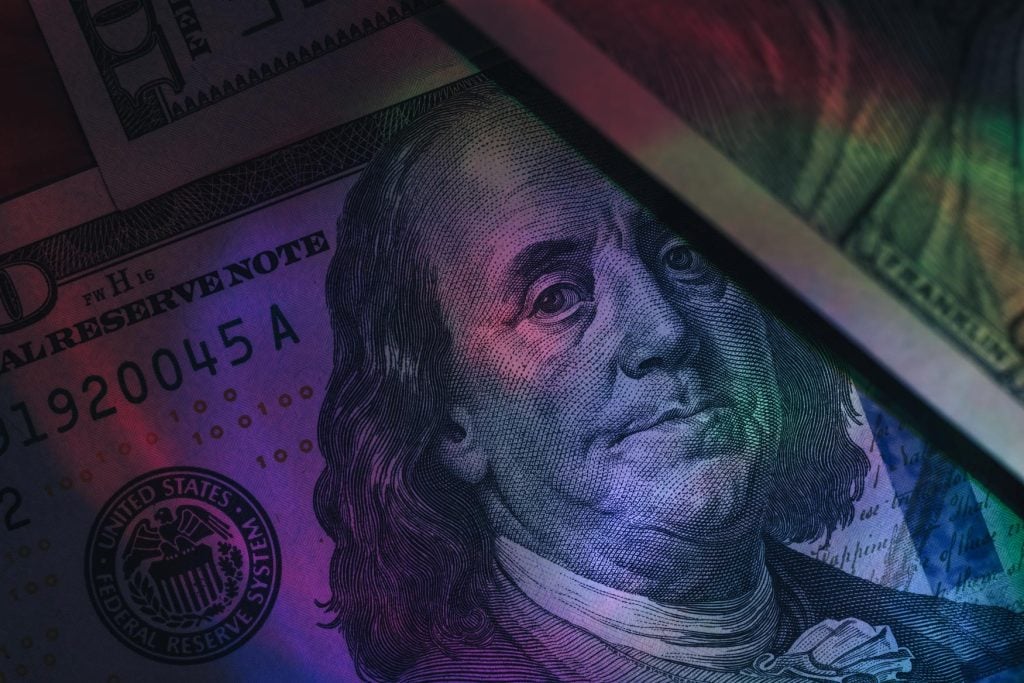Understanding the costs involved in the patent process can be challenging. Whether your invention is in software, engineering, design, or medical devices, knowing the expenses is crucial. So, how much does a patent cost?
This guide will help you understand the financial aspects of the patent process. We’ll outline the costs you might face, enabling you to make informed decisions to protect your ideas effectively. Additionally, we’ll expose common pitfalls that can inflate costs, which many inventors don’t realize until after starting the patent process.
By understanding these variables, you can better plan your patent strategy and budget accordingly. In the following sections, we will dive deeper into the specific costs associated with different types of patents and explore strategies for managing these expenses effectively.
Cost Breakdown and Overview: How Much Does a Patent Cost
If you are willing to take the “do it yourself” approach, filing a patent could cost you as little as a few hundred dollars. However, patenting any invention is a complex process that, if not done correctly from the beginning, could lead to the loss of your legal rights. Hiring a licensed patent attorney or patent agent can help you avoid most issues with this process and drastically improve the quality of your patent application.
Your cost will ultimately depend on the complexity of your invention and the patent attorney or law firm you hire. At The Rapacke Law Group, we pride ourselves on helping startups protect their valuable intellectual property for a transparent flat-fee, which means there is no hourly billing or charges for calls or emails while working on your matter. Navigating the requirements and fees of the patent office is also a critical aspect of the process.
Before filing an application, it is crucial to conduct a patent search to determine whether your invention is patentable. The patent office plays a significant role in the patent application process, as applicants must navigate specific requirements and fees associated with different foreign patent offices. A thorough patent search can help you avoid unnecessary costs by revealing prior art that might prevent registration.
Several elements go into the total cost of your patent. The first step is conducting a prior art search before drafting and filing the application. Law firms typically charge from $1,500 to $4,000 or more to perform a comprehensive prior art search to identify similar issued patents and published patent applications that may present a bar for your registration.
After the prior art search is complete, your attorney can help you determine whether moving forward with a patent application is the best decision based on the results, and to what extent you may be able to claim patent protections. In addition to the prior art search, you will need an attorney to prepare and file your patent application. The utility patent application preparation can cost $10,000 to $20,000 or more, plus the filing fees, to draft and file depending on the complexity of the invention and the type of application being filed.
Cost Ranges for Different Types of Patents
The cost of obtaining a patent can vary significantly depending on the type of invention and industry. Here are some general cost ranges for different types of patents:
- Software Patent: The average cost for a software patent can range from $5,000 to $20,000 or more, depending on complexity and the type of patent needed. This includes costs for patent searches, provisional and non-provisional patent applications, and responses to office actions.
- Electrical Patent: Filing costs typically range from $7,000 to $20,000, depending on the complexity of the invention and whether a provisional or non-provisional application is needed.
- Mechanical Patent: The cost for patenting a mechanical invention can vary from $8,000 to $25,000, influenced by the intricacy of the design and the scope of the protection sought.
- Medical Device Patent: Medical device patents often require extensive documentation and can cost between $10,000 and $30,000 or more, especially if the invention involves complex technology or regulatory considerations.
- Design Patent: Generally less expensive than utility patents, design patent costs typically range from $1,500 to $3,000, though this can increase with complexity. Design patents can cover a variety of creative aspects, such as GUI designs, product designs, and packaging, providing protection for the unique visual characteristics of an invention.
Patent infringement issues can also impact the overall cost and complexity of obtaining a patent.
These estimates are rough and can vary widely based on the specific circumstances of your patent application. Consulting with a patent attorney can provide you with a more accurate estimate tailored to your invention and needs. Investing in professional guidance ensures that you understand the costs involved and can plan your patent strategy effectively.
Factors Affecting Patent Costs
The cost of obtaining a patent can vary significantly depending on several factors. One of the primary determinants is the complexity of the invention. More intricate solutions often require more detailed and extensive patent applications, which can drive up costs. The type of patent application—whether it’s a provisional, non-provisional, or design patent—also plays a crucial role in the overall expense.
The size of the entity applying for the patent is another important factor. Small entities and individual inventors often benefit from reduced government filing fees compared to larger corporations. Additionally, the geographical scope of the patent can impact costs. Seeking patent protection in multiple countries involves higher expenses due to international filing fees and the need for translations and local legal representation.
Patent attorneys’ fees are a significant part of the overall cost. Patent litigation can further increase these expenses. Their expertise in navigating the patent process, drafting applications, and responding to office actions is invaluable but comes at a price. Government filing fees, which cover the cost of examining and processing patent applications, also add to the total expense. Understanding these factors can help you budget effectively and make informed decisions about your patent portfolio and strategy.
Steps Involved in the Patent Process
The patent process involves several steps that can be complex and time-consuming. Here’s an overview of the steps involved:
- Patent Search: Conduct a thorough search of existing patents to ensure your invention is novel and non-obvious. This step is crucial to avoid potential rejections and to understand the existing landscape of similar inventions.
- Determine the Type of Patent: Decide whether you need a utility patent, design patent, or plant patent. Each type of patent offers different protections and has different requirements.
- Prepare and File a Provisional Patent Application: Filing a provisional patent application establishes an early priority date for your invention. This step is often the first formal step in the patent process and can provide a “patent pending” status. Filing a provisional will often times depend on the developmental stage of your invention or urgency for filing.
- Prepare and File a Non-Provisional Patent Application: Within one year of filing the provisional patent application, you must file a non-provisional patent application. This application is more detailed and is the basis for the patent examination process.
- Patent Office Review: The patent office will review your application to determine whether your invention is patentable. This review includes an examination of the novelty, non-obviousness, and usefulness of your invention.
- Respond to Office Actions: If the patent office issues any office actions or rejections, you will need to respond with appropriate amendments or arguments. This step may involve multiple rounds of communication with the patent examiner.
- Patent Grant: If your application is approved, you will be granted a patent. This grant provides you with exclusive rights to your invention for a specified period.
- Maintenance Fees: To keep your patent in force, you must pay maintenance fees at regular intervals. These fees are essential to maintain the legal protection of your invention.
Provisional vs Non-Provisional Patents
When considering patent protection, it’s essential to understand the differences between provisional and non-provisional patents, as each serves a unique purpose in the patent application process.
Provisional Patent
A provisional patent application is a strategic investment that provides a “patent pending” status for your invention before it hits the market. This type of application is less formal and does not require a full patent claim. It establishes an early priority date, which can be crucial in the competitive world of inventions. Hiring a patent attorney to assist with a provisional patent application can cost between $3,000 to $10,000 or more, depending on the complexity of the invention and the attorney’s expertise.
Non-Provisional Patent
A non-provisional patent application is necessary if you seek full patent protection. It must be filed within one year of the provisional patent to maintain the priority date. This application requires a comprehensive and detailed description of the invention, including specific claims that outline the scope of protection being sought. The estimated cost for filing a non-provisional patent application ranges from $10,000 to $20,000 or more, again depending on the invention’s complexity and the legal assistance required.
Understanding these two types of patents and their respective costs is crucial for effectively planning your patent strategy and ensuring comprehensive protection for your invention.
Government Filing Fees
The provided information is not entirely accurate. Here are the correct government filing fees for patent applications, based on the most recent USPTO fee schedule:
For utility patents:
- Basic filing fee for a small entity is $128, while for a large entity it is $320.
- For micro entities, the basic filing fee is $64.
For design patents:
- Basic filing fee for a small entity is $88, while for a large entity it is $220.
- For micro entities, the basic filing fee is $44.
For plant patents:
- Basic filing fee for a small entity is $88, while for a large entity it is $220.
- For micro entities, the basic filing fee is $44.
Additional fees include:
Search fees: For utility patents, these range from $320 to $800 for large entities, $160 to $400 for small entities, and $80 to $200 for micro entities.
Examination fees: For utility patents, these range from $480 to $1,200 for large entities, $240 to $600 for small entities, and $120 to $300 for micro entities.
Issue fees: For utility patents, these are $1,200 for large entities, $600 for small entities, and $300 for micro entities.
It’s important to note that these fees are subject to change, and additional fees may apply depending on specific circumstances or optional services. Always check the official USPTO fee schedule for the most up-to-date information.
Responding to Office Actions
Responding to office actions is a critical part of the patent application process. An office action is a letter from the patent examiner that outlines any issues or concerns they have with the application. Responding to an office action can be a time-consuming and costly process, with costs ranging from $1,500 to $3,000 or more. This is because the patent attorney must carefully review the office action and draft a response that addresses each of the examiner’s concerns. In some cases, the patent attorney may need to conduct additional research or gather more information to support the application.
Patent Maintenance Fees
Patent maintenance fees are essential to keep utility patents in force. These fees are paid to the USPTO at 3.5, 7.5, and 11.5 years after the patent is granted. The fees vary depending on the entity size (large, small, or micro) owning the patent.
For utility patents, the maintenance fees are:
- At 3.5 years: $2,000 for large entities, $800 for small entities, and $400 for micro entities.
- At 7.5 years: $3,760 for large entities, $1,504 for small entities, and $752 for micro entities.
- At 11.5 years: $7,700 for large entities, $3,080 for small entities, and $1,540 for micro entities.
It’s important to note that design patents do not require maintenance fees. The statement about maintenance fees for design patents is incorrect.
Failure to pay maintenance fees can indeed result in the patent expiring, causing the loss of exclusive rights to the invention. However, there is a six-month grace period after each due date during which the fee can be paid with a surcharge. If the fee is not paid by the end of the grace period, the patent will expire.
To maintain patent protection, it’s crucial to pay these fees on time or within the grace period. Patent owners should be mindful of these deadlines to ensure their intellectual property remains protected throughout the patent’s lifespan.
Why Does It Cost So Much to Prepare Patent Applications?
The time, knowledge, and monetary costs required to file a patent application are significant, but the potential benefits can be even greater. Interactions with a patent examiner during patent prosecution can incur additional costs due to the need for responses to their feedback. Consider the following when determining whether to get a patent for your invention: what is the invention worth? If you are looking at small potential returns in product sales or revenue, or if there would not be any advantage or benefit to preventing competitors’ access to the same, then it may not be worth the investment to pursue a patent.
However, if the invention could generate substantial income or provides a competitive edge for your company – the financial investment may be justified. Always weigh potential costs and benefits before embarking on this path; patents can cost thousands over time, but the intellectual property they protect could be worth much more. Additionally, be aware of potential patent infringement issues that could arise. The complexities and requirements set by different patent offices also play a crucial role in the patent process, emphasizing the need to understand local rules and examination guidelines.
Cost of Hiring a Patent Attorney
The cost of hiring a patent attorney can vary widely depending on the complexity of your invention, the type of patent you need, and the attorney’s experience. Here are some estimated costs:
- Patent Search: $1,000 to $3,000. This cost covers the thorough search of existing patents to ensure your invention is novel and non-obvious.
- Provisional Patent Application: $2,000 to $6,000. This fee includes the preparation and filing of a provisional patent application to establish an early priority date.
- Non-Provisional Patent Application: $5,000 to $15,000. This cost covers the detailed preparation and filing of a non-provisional patent application.
- Patent Office Review: $1,000 to $3,000. This fee includes the review and examination of your patent application by the patent office.
- Respond to Office Actions: $1,000 to $3,000. This cost covers the preparation and submission of responses to any office actions or rejections from the patent office.
- Patent Grant: $1,000 to $3,000. This fee includes the final steps to secure the grant of your patent.
Choosing the Right Patent Attorney
Cost alone should not be the only determining factor when choosing your patent attorney. It isn’t wise to blindly choose the cheapest or most expensive patent attorney that you can find. Instead, consider a variety of factors to help you determine which patent attorney is going to provide you a quality service that fits your needs.
Ask the attorney what practice area they focus on. It should be similar to the type of patent that you wish to pursue. Research the attorney’s reputation and experience, and read reviews of previous clients’ experience. Ask for an explanation of the fee structure; it should be clear and transparent so that you can easily understand what you will owe. Pay attention to the method and speed of communication. You should be able to easily communicate with your attorney. Additionally, inquire about their experience with patent litigation.
Patent Agent vs. Patent Attorney
When it comes to navigating the patent application process, inventors have the option to work with either a patent agent or a patent attorney. Both professionals can provide valuable assistance, but there are key differences between the two. A patent attorney is a licensed legal professional who has passed the bar exam and has the expertise to provide comprehensive guidance throughout the patent application process. They can offer legal advice, represent clients in court, and handle complex patent law issues.
On the other hand, a patent agent is a representative who has passed the Patent Bar through the USPTO and is qualified to assist with the preparation and filing of patent applications. While patent agents are knowledgeable about the technical and procedural aspects of the patent application process, they may not have the same level of expertise as patent attorneys, particularly when it comes to legal matters.
Choosing between a patent agent and a patent attorney depends on your specific needs, the complexity of your invention, and the management of your patent portfolio. For straightforward applications, a patent agent may suffice. However, for more complex inventions or if you anticipate potential legal challenges, a patent attorney’s broader legal expertise can be invaluable.
Importance of Conducting a Patent Search
Conducting a patent search is a crucial step in the patent application process. A patent search involves reviewing existing patents and patent applications to determine the novelty and non-obviousness of an invention. This step is essential in ensuring that an invention is eligible for patent protection and can help avoid costly rejections or litigation down the line.
Patent attorneys and agents can assist with conducting patent searches, leveraging their expertise to identify relevant prior art and assess the patentability of your invention. Some may even offer this service as part of their overall patent application package, providing a comprehensive approach to securing your intellectual property.
The United States Patent and Trademark Office (USPTO) provides resources and tools for conducting patent searches, including online databases and search engines. Utilizing these resources can help you gain a better understanding of the existing landscape and make informed decisions about your patent strategy. By conducting a thorough patent search, you can increase the likelihood of a successful patent application and protect your invention effectively.
Risks of Filing a Patent Without an Attorney
Filing a patent without an attorney can be risky and may result in:
- Inadequate Protection: Without proper guidance, you may not be able to adequately protect your invention. This could leave your invention vulnerable to infringement.
- Rejection: Your application may be rejected due to errors or omissions. The patent process is complex, and even small mistakes can lead to rejection.
- Delays: The patent process can be delayed due to mistakes or misunderstandings. These delays can be costly and may impact your ability to protect your invention in a timely manner.
Cost-Saving Options
When it comes to obtaining a patent, the costs can add up quickly. However, there are some cost-saving options that inventors and businesses can consider.
Filing a Patent Yourself
One option is to file a patent yourself, without the help of a patent attorney. This can be a cost-effective option, but it’s essential to keep in mind that the patent process is complex and requires a deep understanding of patent law. If you’re not familiar with the process, it’s easy to make mistakes that can cost you time and money in the long run.
The patent application process involves numerous steps, including conducting a thorough patent search, preparing detailed descriptions and claims, and responding to office actions from the patent examiner. Any errors or omissions in these steps can lead to delays, additional costs, or even the rejection of your application. Therefore, while DIY patent filing might save you money upfront, it could end up being more costly in the long term if not done correctly.
Affordable Patent Options
Another option is to look for affordable patent options, such as flat-fee patent services or patent attorneys who offer discounted rates for certain types of patents. These options can be a good choice for inventors and businesses who are on a tight budget but still want to protect their intellectual property. Some law firms and patent attorneys offer flat-fee services, which can provide transparency and predictability in costs.
Additionally, some patent attorneys may offer discounted rates for startups or for specific types of patents, such as design patents, which are generally less complex than utility patents. By exploring these options, you can find professional assistance that fits your budget while ensuring that your patent application is handled correctly.
Benefits of Getting a Patent
Getting a patent can provide numerous benefits to inventors and businesses. One of the most significant benefits is the ability to prevent others from making, using, or selling the invention without permission. This can help to protect the inventor’s intellectual property and prevent others from profiting from their work. Additionally, having a patent can increase the value of the invention and make it more attractive to investors or potential buyers.
Patents can also provide a competitive advantage in the marketplace, as they can help to differentiate the invention from similar products or services. Finally, patents can provide a source of revenue through licensing or royalties.
Start the Patent Process
To begin the patenting journey for your invention, it’s crucial to consult with a licensed patent attorney who specializes in the type of patent you require. This consultation is your chance to learn about the patent process, understand the fee schedule, and evaluate the communication dynamics with the attorney.
Take the first step towards protecting your intellectual property by scheduling a free IP Strategy call with our experienced team today. Book your Free IP strategy call. Plus, with The RLG Guarantee, you can trust that our commitment to quality and client satisfaction is unmatched. Let us help you navigate the complexities of patent law with confidence.




